SUMMARY
This is AI generated summarization, which may have errors. For context, always refer to the full article.
![[Newsstand] Fight against erasure, but guard against exaggeration](https://www.rappler.com/tachyon/2022/05/tl-fight-against-erasure.jpeg)
An electoral map of the Philippines that is a beautiful visualization of the results of the May 9 elections is making the rounds on social media. Painstakingly rendered by Migs Caldeo, it tracks the presidential election by coloring every city or municipality won by Ferdinand Marcos Jr. green, every one won by Leni Robredo pink; it also shows those cities or municipalities in the Visayas and Mindanao won by Manny Pacquiao (purple) and those in Mindanao won by Faisal Mangondato (orange).
“Leading presidential candidate in each city or municipality as of 16 May 2022,” the caption reads. “Edited using Paint and extreme amounts of boredom,” Caldeo says in another tweet. I cannot independently verify the election data used; Caldeo says he used data from news websites, and I assume he is mainly referring to election results distributed to news organizations through the Commission on Elections’ transparency server before it was decommissioned on May 13. But the map seems to accurately track the partial and unofficial results available to the public. (I cross-checked the outcome of about two dozen places, and found them faithfully reflected.)
The result is a striking piece of data art: beautiful, precise – and misleading.
It shows Luzon and Mindanao as largely green, with pink bailiwicks mainly in Bicol and in Western and Eastern Visayas. The level of detail is such that it is able to show Concepcion, Tarlac, right in the middle of Luzon, as a pink oasis in a large green desert. (This is one of the features of Caldeo’s map that grabs one’s attention.) The reach of Pacquiao’s Bisayang Dako appeal is illustrated, and the (surprising but on reconsideration not unexpected) depth of Mangondato’s support in the Lanao provinces is depicted.
But we don’t have any Electoral College nonsense in the Philippines; there is no predetermined number of votes per province or region that goes to the winning candidate in that province or region. The number of votes each candidate gains is added to the candidate’s total. In Quezon City, for instance, Marcos got 629,000 votes, while Robredo won over 376,000. (The transparency server stopped transmitting at slightly above the 98% mark, overall, but the actual level varies from place to place. The results currently available for Quezon City are for 97.35% of all election returns.)
Marcos topped the elections in the country’s richest city, but he did not win ALL the votes in Quezon City. Those votes for Robredo are still added to her total, which will likely breach 15 million at the end of this turbulent, fraud-stained election cycle.
It is truly an “amazing map” (to quote colleague-in-trade Manuel Quezon III), but Robredo voters in Quezon City looking at it will find themselves erased.
Mind the gap
Does the same hold true, say, for the 566,000 Marcos voters in Bicol? No, because the map illustrates a Marcos victory; he won in more places, and he won the election itself. The Marcos voters in Robredo’s bailiwicks share in the overall victory.
But because Robredo only came in second, the map inadvertently magnifies the scale of her defeat, and effectively disappears her voters in those many areas where she did not top the election. It is the erasure of the Robredo votes in this beautiful visualization that we must be aware of and guard against.
In the three regions of Northern Luzon, some 585,000 voters supported Robredo. But because the map reflects Marcos’ victory in Regions I and II and the Cordillera Autonomous Region, the Robredo voters in these regions have been erased.
There are maps (“heat maps”) that show levels of support for particular presidential candidates through gradations of the candidate’s color; they aren’t as elegant and compelling as the map that is going viral, but they have the advantage of non-erasure; all voters who cast their ballot are accounted for.
The viral map also fails to reflect the reality of closely fought elections. Perhaps the most surprising city result was Bacolod’s, which hosted one of the large Robredo rallies that galvanized her supporters. Because Marcos topped the contest in that city, the city is rendered green. But Marcos won by less than 10,000 votes: 121,000 to 112,000, rounded off. Coloring the city green correctly reflects Marcos’ victory, but it also – inadvertently, inaccurately – reduces Robredo’s very strong support in the city to zero.
The first rule of interpretation for the democratic and progressive forces that coalesced around Robredo, then, is to fight against, to refuse to be complicit in, their erasure.
Academic erasure
But there is another kind of erasure, also largely inadvertent, that has a debilitating or demoralizing effect too on democratic and progressive forces. I mean the readiness, among scholars and researchers working even with the best of intentions, to reduce the battle of narratives to a winner-take-all analysis.
It stems from the unexamined assumption that in politics the only successful or satisfying narrative (or myth, or story, or truth) is the one that results in victory. Robredo lost, and by a spectacular margin, and therefore we pronounce the counter-narratives she ran on as a failure. But this cannot be right.
Marcos famously lost the vice presidential election in 2016, but scholars and researchers rightly and justifiably studied his campaign and his disinformation and propaganda networks with close attention even after and despite his loss, because they were valid subjects in themselves and because Marcos remained a viable political force.
I am starting to hear, and read, eminent scholars and researchers analyze the 2022 elections as though the Robredo narratives failed and as though Robredo is no longer the viable hub of a political movement. I write “as though” because I do not, in fact, believe that these specialists think these thoughts – but the language they use sometimes seems to be based on just such assumptions.
Let an important post-election analysis by the highly esteemed and widely influential scholar Jonathan Corpus Ong serve as an example. My own counter-disinformation advocacy has been shaped in part by the pioneering, insightful work of this young, brilliant professor; his research into the architecture of networked disinformation, conducted with another rising star, Jason Cabanes, was highlighted during the first conference on democracy and disinformation, back in February 2018, and has since formed part of the D&D toolbox.
Writing for Time magazine, Ong explains in clear, crisp prose exactly why “The World Should Be Worried About a Dictator’s Son’s Apparent Win in the Philippines.” He also warns against “reductive” analyses, such as blaming the rise of illiberal populists on “uneducated voters brainwashed by disinformation.” He is right, of course.
Factual record
That Marcos ran a years-long rehabilitation project anchored on social media cannot seriously be disputed, even though there is no lack of Marcos supporters who will dispute the incontrovertible factual record. (My go-to prompt is to ask why Marcos lost his Senate race in 1995 and won his second Senate run in 2010.) That this social media and digital media campaign is built around networked disinformation and now includes sometimes innocent, sometimes insidious “gray content,” is also a matter of record, painstakingly put together by scholars and disinformation researchers.
This project, this campaign, is surely an important cause of Marcos’ victory, but it isn’t the only major factor at work. There is plenty of room to rehash the old arguments over victimhood vs. agency.
But Ong also writes, sweepingly: “We might also consider why progressives have failed to offer hurt and traumatized communities any satisfying narratives to address their concerns, leaving far-right media manipulators to have full control of information voids.”
Have progressives failed, in fact, to offer ANY satisfying narratives? Only if the definition of satisfaction is victory at the polls. But anyone who covered the Robredo candidacy or observed its house-to-house campaign witnessed enough of the messaging succeeding, enough to draw large rallies and to inspire hundreds of thousands of volunteers. From 8% in September, a month before she filed her certificate of candidacy, Robredo tripled her election preference rating by the last Pulse Asia survey in April, to 23%. She will end up with 28% of the vote. How could she have done that, without offering “satisfying narratives”?
Ong actually touches on the Robredo counter-narratives before making his sweeping statement, calling this tardy turn “inspiring” and “monumental” but also “too little too late.” Again, I think I see his point and share his view, but his language just assumes that victory at the polls defines narrative success. In fact, the elections prove that the counter-narratives helped create a sizable counter-public, some 15 million strong.
Much more can be said about the emerging power of these counter-narratives, but for now, let’s draw one lesson. The second rule of interpretation for the democratic and progressive forces is to fight against, to refuse to be complicit in, the erasure of what sociologist Zeynep Tufekci would call their narrative capacity.
No exaggeration
At the same time, the Robredo campaign must be careful not to read too much into their numbers. It is true that 15 million votes is a large sum, almost equivalent to Noynoy Aquino’s winning total in 2010; higher than the vote totals for three presidents; and much higher than the number of votes Mar Roxas or Grace Poe received in 2016. But Robredo came up short – in some instances, dramatically so – of the 22 million votes that I argued she needed to win.
One instance: She needed to win 3 million votes in Mindanao to remain competitive, but despite the wave of local government officials switching their support to her, she ended up with only 1.6 million. Worse, this total is just 20% of the 8 million votes Marcos got in Mindanao. The scale of Marcos’ victory can be gauged in part from this irony: While Robredo needed those 3 million votes from Mindanao, Marcos did not need his 8 million at all. Just his votes from Luzon, at 17.3 million, would have been enough to win the presidency.
The third rule of interpretation for the democratic and progressive forces, then, is to identify their real gains (half a million more votes in Metro Manila, 600,000 more in Calabarzon, than in 2016), without exaggerating their value. Marcos won a million more votes in Metro Manila, and 2 million more in Calabarzon, in 2022. – Rappler.com
Veteran journalist John Nery is a columnist and editorial consultant of Rappler.
Add a comment
How does this make you feel?

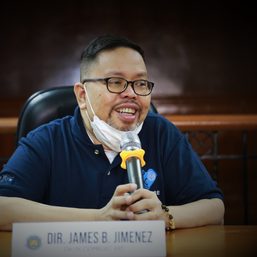
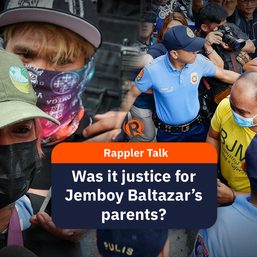
![[New School] Tama na kayo](https://www.rappler.com/tachyon/2024/02/new-school-tama-na-kayo-feb-6-2024.jpg?resize=257%2C257&crop=290px%2C0px%2C720px%2C720px)
![[Only IN Hollywood] After a thousand cuts, and so it begins for Ramona Diaz and Maria Ressa](https://www.rappler.com/tachyon/2024/02/Leni-18.jpg?resize=257%2C257&crop=262px%2C0px%2C720px%2C720px)
![[OPINION] If it’s Tuesday it must be Belgium – travels make over the Marcos image](https://www.rappler.com/tachyon/2024/04/tl-travel-makeovers-marcos-image.jpg?resize=257%2C257&crop_strategy=attention)

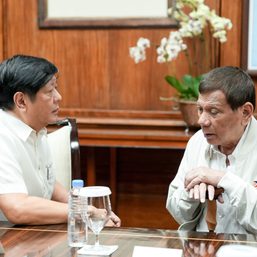
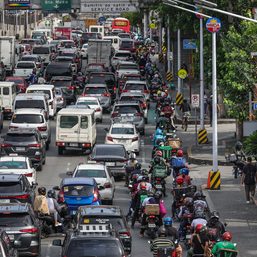





![[Newspoint] Fake press, undeserved freedom](https://www.rappler.com/tachyon/2024/04/newspoint-fake-press-undeserved-freedom-April-5-2024.jpg?resize=257%2C257&crop=318px%2C0px%2C720px%2C720px)
![[OPINION] Sara Duterte: Will she do a Binay or a Robredo?](https://www.rappler.com/tachyon/2024/03/tl-sara-duterte-will-do-binay-or-robredo-March-15-2024.jpg?resize=257%2C257&crop_strategy=attention)

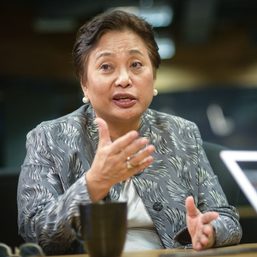

There are no comments yet. Add your comment to start the conversation.